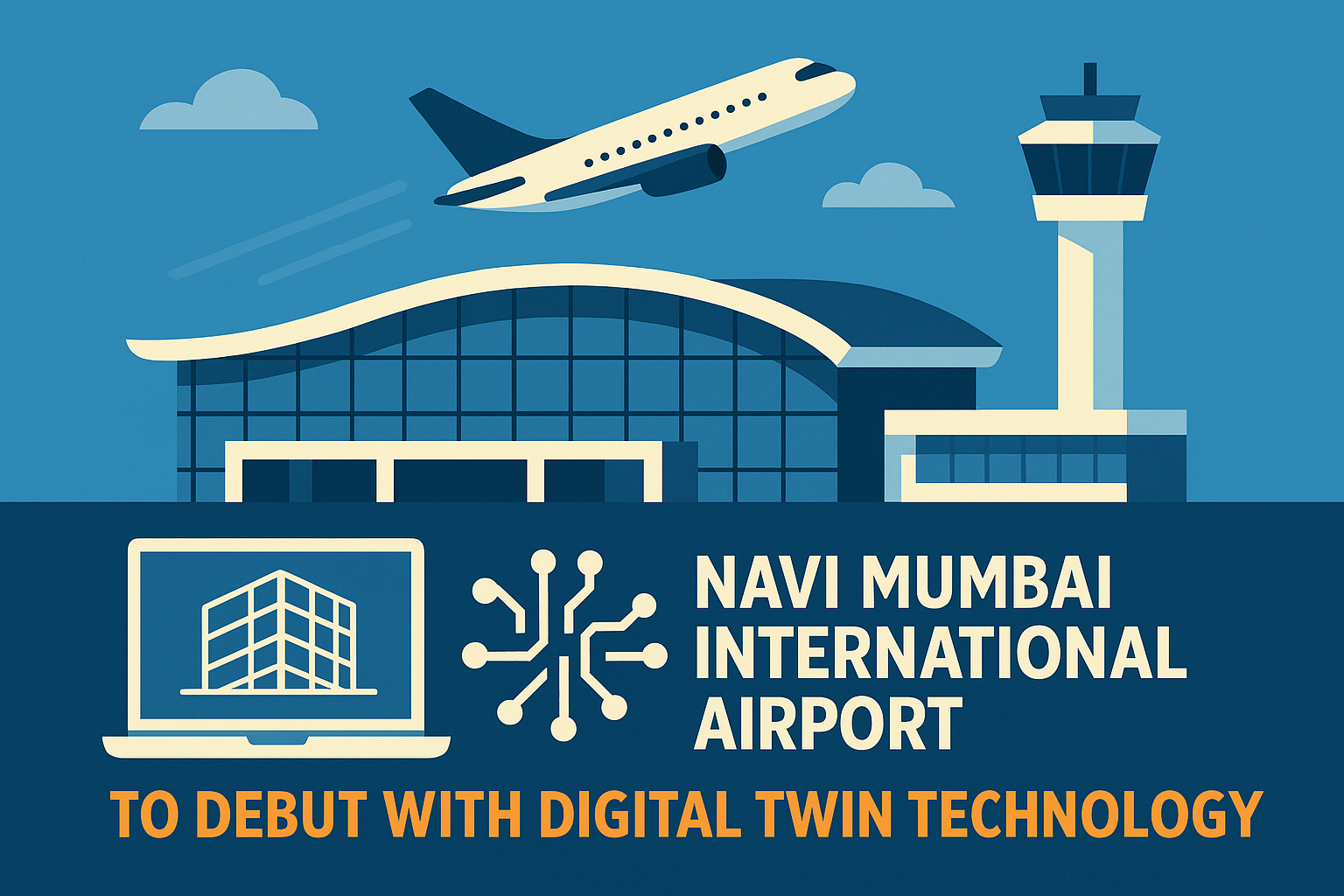
Navi Mumbai International Airport to Debut with Digital Twin Technology, Ushering a New Era in Aviation
Navi Mumbai International Airport (NMIA) is preparing for its much-anticipated launch with a groundbreaking digital-first approach. When the airport opens its doors — tentatively on September 30 — it will become India’s first fully digital airport, operating with a “digital twin” that promises seamless operations, predictive maintenance, and a futuristic passenger experience.
What is a Digital Twin and Why It Matters
At its core, the digital twin is a multi-dimensional digital replica of the airport, often described as an “airport in a box.” Developed through the integration of Building Information Modelling (BIM) and Geographic Information Systems (GIS), this technology allows the airport to simulate operations in real time.
For example, the system can anticipate equipment failures before they occur, intelligently allocate resources such as manpower and energy, and optimise maintenance schedules. Instead of responding to problems after they arise, NMIA will be able to predict and prevent them — a leap in efficiency for India’s aviation infrastructure.
This innovation is being spearheaded by Adani Digital Lab, the technology arm of Adani Airports Holding Ltd (AAHL), which operates seven airports across the country. NMIA will be the first airport built from the ground up with digital-native infrastructure embedded in its DNA.
Future-Proofing Airport Infrastructure
Traditionally, airports have struggled with scaling operations during expansions or upgrades. According to AAHL, one of the biggest strengths of the digital twin approach is its ability to seamlessly integrate future capacity expansions into the existing system.
This means that adding new terminals, expanding runways, or scaling passenger handling capacity won’t require entirely new IT frameworks. Instead, the digital twin allows new modules to “plug in” to the existing ecosystem. From enterprise asset management to cybersecurity and green technology initiatives, NMIA is positioning itself to grow without disruption.
The project also reflects Prime Minister Narendra Modi’s broader vision of creating world-class infrastructure in India that is not just functional but also future-ready.
Aviio: The Nerve Centre of Airport Operations
Alongside the digital twin, NMIA will also deploy aviio, a proprietary software platform developed by Adani Digital Lab. Already functional at Mumbai’s Chhatrapati Shivaji Maharaj International Airport (CSMIA), aviio acts as the central operating system for all airport stakeholders.
From airlines and ground handlers to security agencies and service providers, aviio ensures that information flows smoothly and that operations remain coordinated. For instance, baggage arrival times, aircraft turnaround schedules, or even real-time temperature control in passenger areas can be monitored and managed from a single dashboard.
The integration of video analytics, real-time data on baggage handling, and temperature monitoring further enhances operational efficiency. This system is not only about back-end logistics but also about creating a more reliable and stress-free passenger experience.
Passenger-Centric Digital Ecosystem
While the technology behind NMIA may sound complex, the passenger-facing benefits are simple and practical. Through the Adani One app, travellers will have access to a wide range of services in one place.
Passengers will be able to:
- Pre-book lounges for a comfortable travel experience
- Order food and beverages from partner restaurants
- Navigate terminals easily with digital maps
- Earn and redeem Adani Rewards across the airport ecosystem
With more than 15 million downloads of the Adani One app across AAHL-operated airports, this model has already proven its popularity and usability. For NMIA, it will serve as a natural extension, ensuring passengers can enjoy seamless services from day one.
Setting a Benchmark for Indian Aviation
The adoption of digital twin technology at NMIA is more than a milestone for one airport — it is a signal of systemic change in India’s aviation sector. As India races to become one of the largest air travel markets in the world, airports must deliver not just capacity but also reliability, speed, and convenience.
By embedding technology into its very foundation, NMIA represents a shift from traditional brick-and-mortar infrastructure to digitally intelligent ecosystems. This transformation could also inspire other infrastructure projects — from smart ports to metro systems — to adopt similar models.
Challenges Ahead
While the promise is immense, the real test will come after the airport is operational. Ensuring the digital twin remains updated, secure, and integrated with evolving technologies will require consistent investment and oversight. Additionally, as aviation is a highly regulated sector, balancing innovation with compliance will be critical.
However, Adani Group’s track record across multiple airports suggests that the model is both scalable and sustainable. If executed well, NMIA could redefine what passengers expect from airports in India.
A Glimpse Into the Future
As the inauguration date of September 30 approaches, excitement is building not just in Navi Mumbai but across the country. For travellers, NMIA won’t just be another airport — it will be a testament to how technology can elevate infrastructure and make everyday experiences more efficient, transparent, and enjoyable.
With its digital twin, aviio-powered operations, and passenger-first digital ecosystem, NMIA is more than an airport launch. It is India’s entry into the era of truly smart airports, one where every detail — from baggage handling to lounge booking — is driven by data, intelligence, and efficiency.




